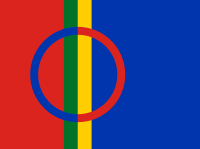
Photo from wikipedia
The Heterobasidion annosum s.l species complex comprises the most damaging forest pathogens to Norway spruce. We revisited previously identified Quantitative Trait Loci (QTLs) related to Heterobasidion-resistance in Norway spruce to… Click to show full abstract
The Heterobasidion annosum s.l species complex comprises the most damaging forest pathogens to Norway spruce. We revisited previously identified Quantitative Trait Loci (QTLs) related to Heterobasidion-resistance in Norway spruce to identify candidate genes associated with these QTLs. We identified 329 candidate genes associated with the resistance QTLs using a gene-based composite map for Pinaceae. To evaluate the transcriptional responses of these candidate genes to H. parviporum, we inoculated Norway spruce plants and sequenced the transcriptome of the interaction at 3 and 7 days post inoculation. Out of 298 expressed candidate genes 124 were differentially expressed between inoculation and wounding control treatment. Interestingly, PaNAC04 and two of its paralogs in the subgroup III-3 of the NAC family transcription factors were found to be associated with one of the QTLs and was also highly induced in response to H. parviporum. These genes are possibly involved in the regulation of biosynthesis of flavonoid compounds. Furthermore, several of the differentially expressed candidate genes were associated with the phenylpropanoid pathway including a phenylalanine ammonia-lyase, a cinnamoyl-CoA reductase, a caffeoyl-CoA O-methyltransferase and a PgMYB11-like transcription factor gene. Combining transcriptome and genetic linkage analyses can help identifying candidate genes for functional studies and molecular breeding in non-model species.
Journal Title: Scientific Reports
Year Published: 2020
Link to full text (if available)
Share on Social Media: Sign Up to like & get
recommendations!